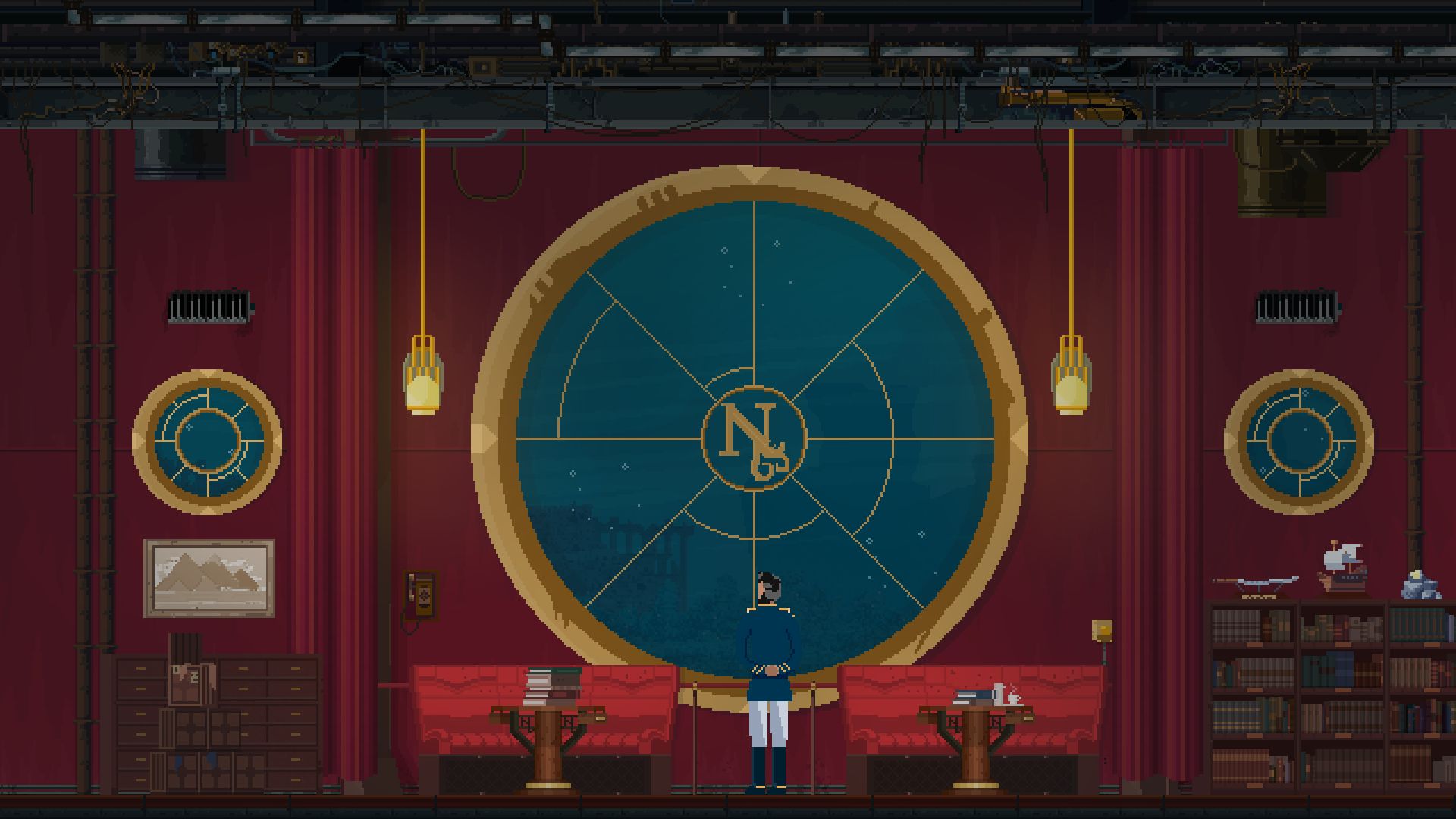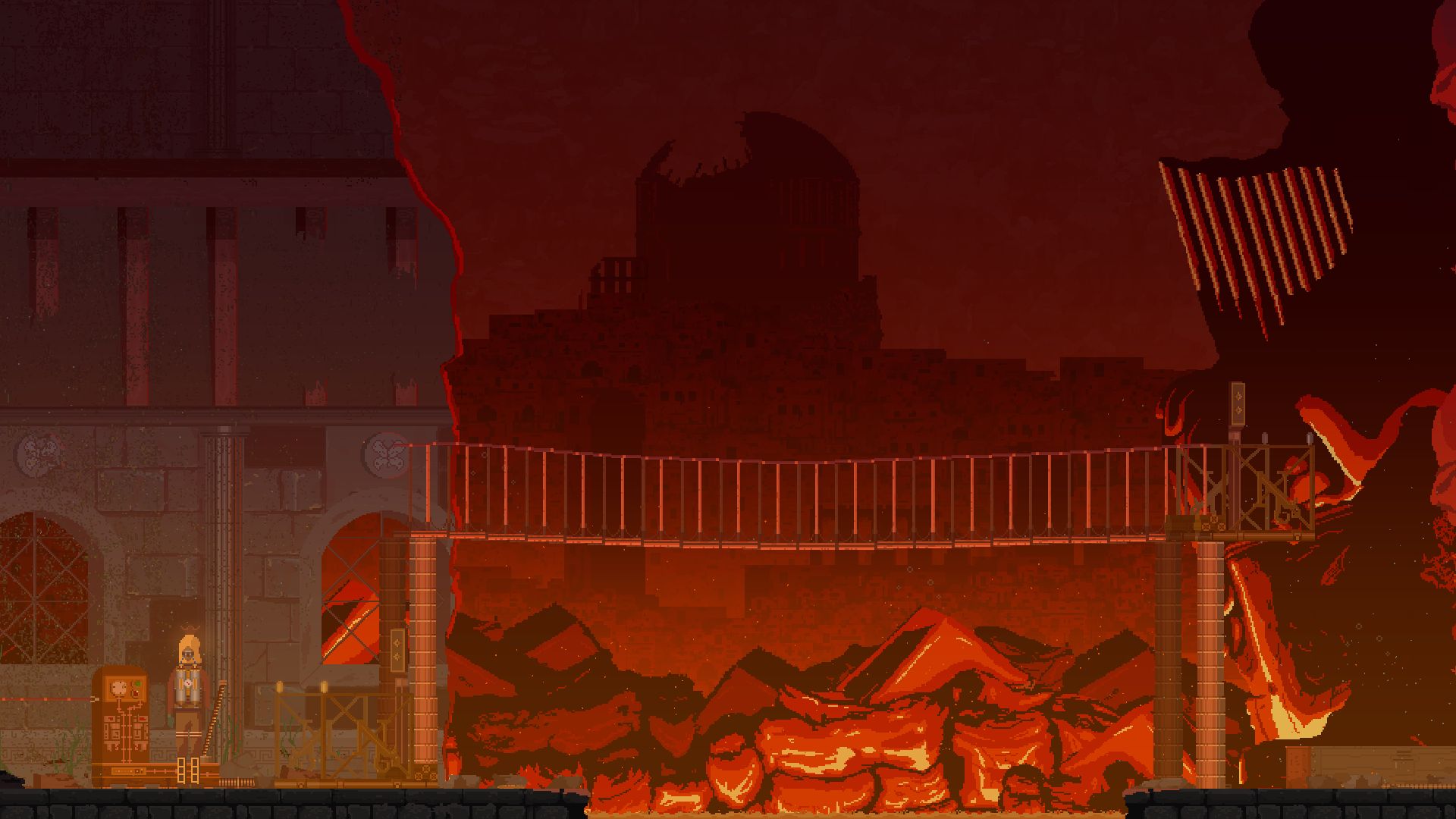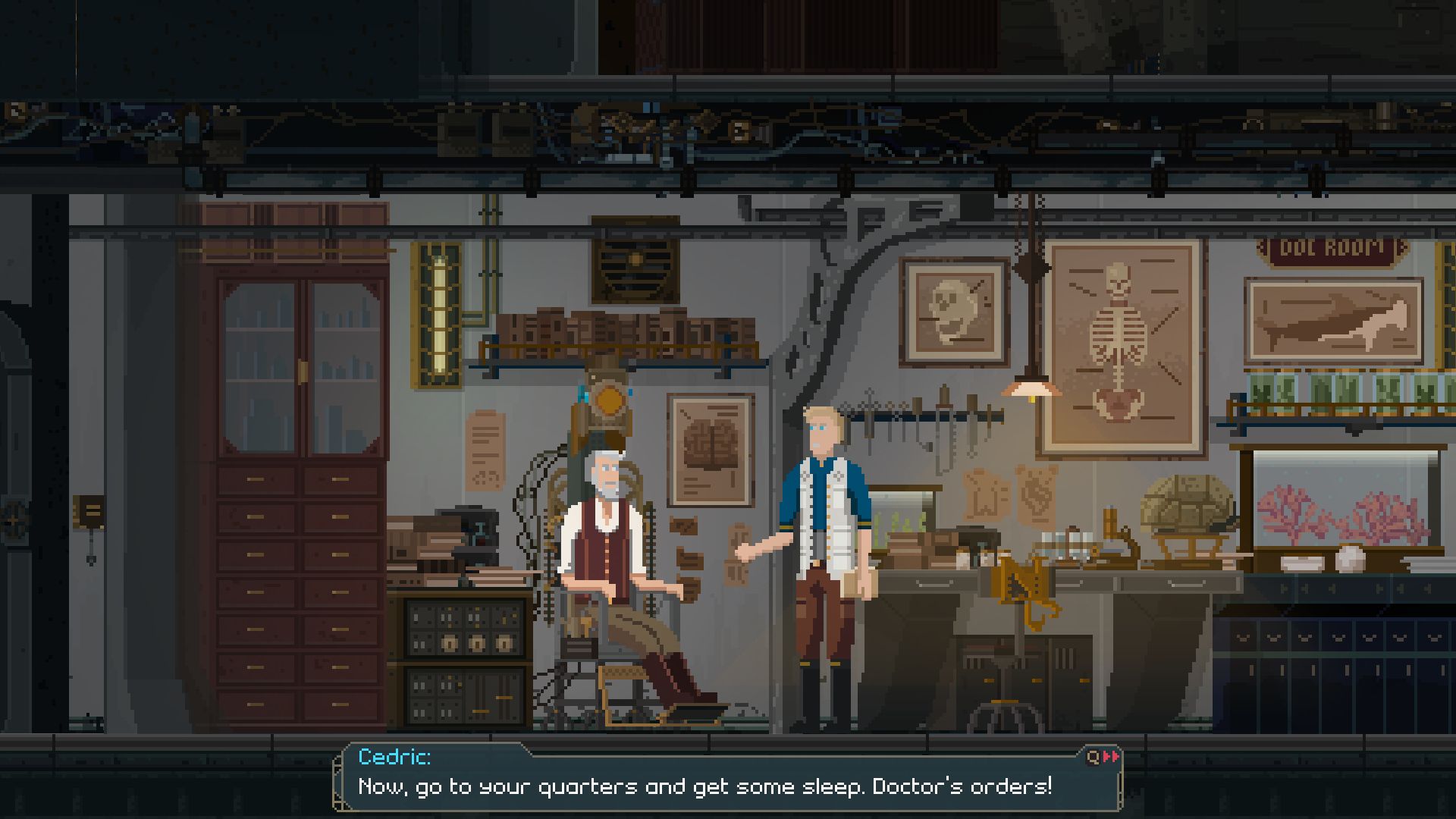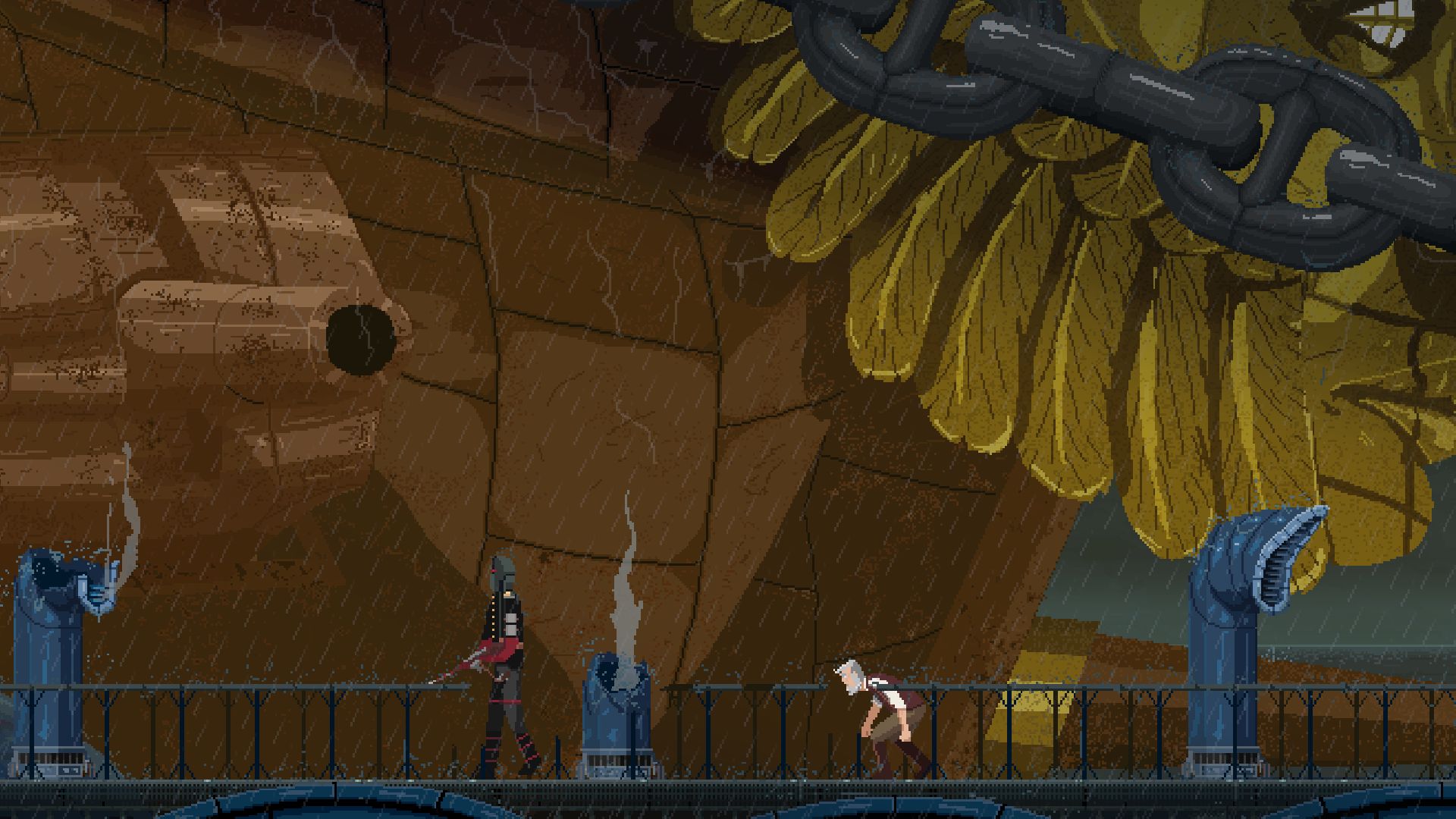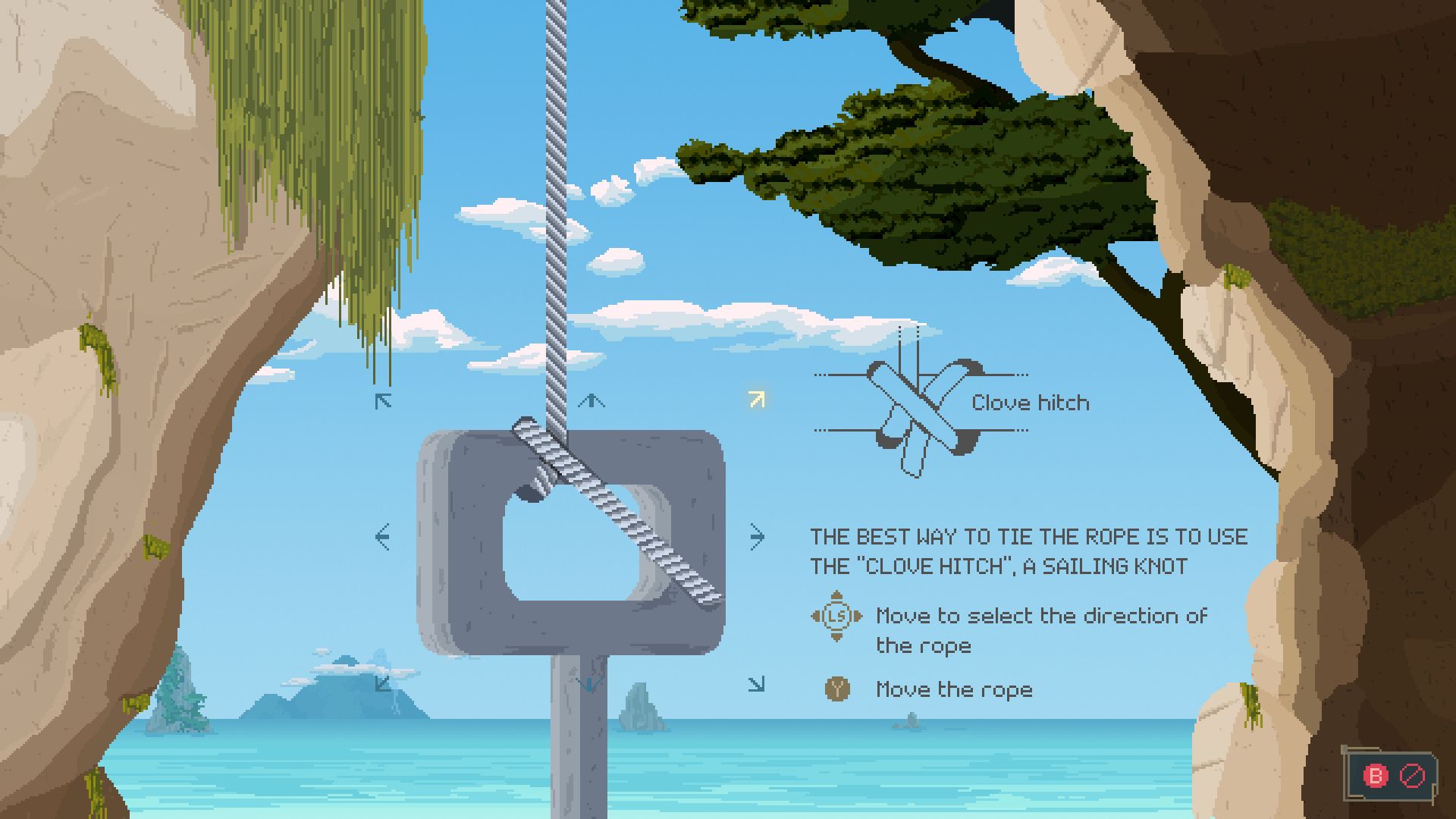Interview with Daniel Gonzalez
While Jules Verne's visionary works have often been adapted into video games, they hadn't found their way back to our consoles for over a decade. So, it was with great pleasure and genuine curiosity that we discovered Verne: The Shape of Fantasy (recently released on Switch). So curious, in fact, that we wanted to interview the Spanish studio Gametopia, the creators of the game. Daniel Gonzalez, the creative director who designed, wrote, and created the pixel art for Verne, kindly agreed to answer our questions.
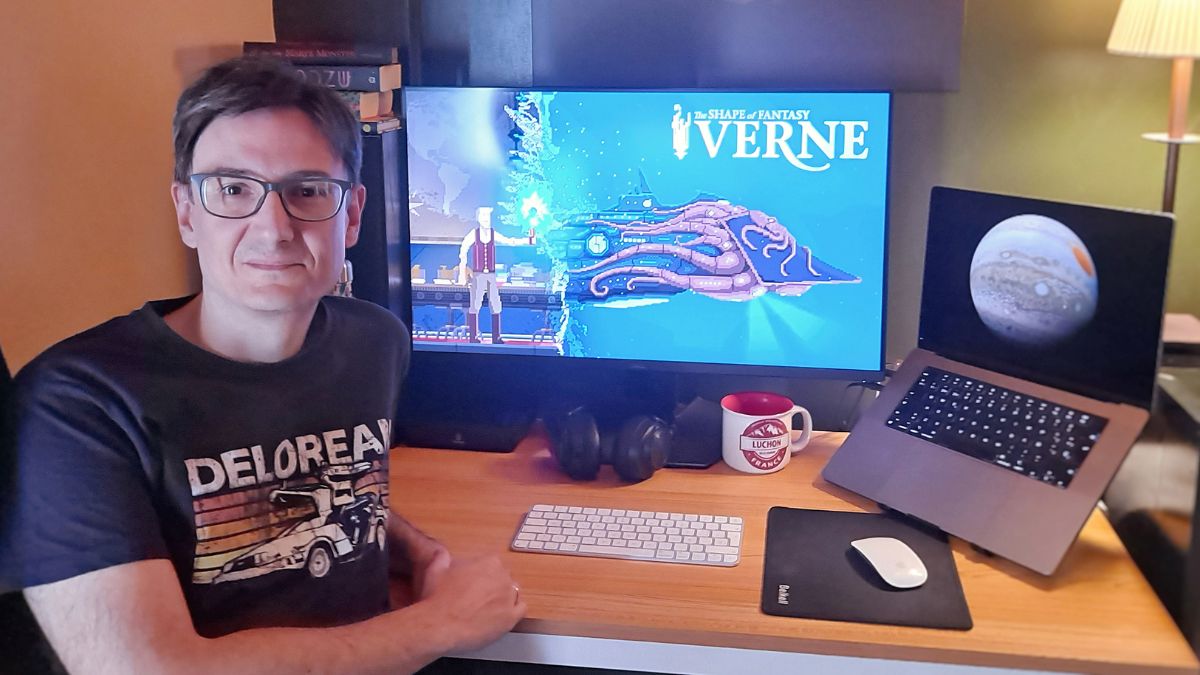
"When I fell in love with Verne's work, I was about 12 years old."
If you had to present Verne: The Shape of Fantasy in one sentence to someone who has never heard of it, how would you describe it?
Daniel GonzalezA pixel art narrative game where you become Jules Verne and face your own creations, which like all authors are your fears and desires.
What is your first memory of Jules Verne's work?
Daniel GonzalezI have several memories. My first contact was the Disney movie 20,000 Leagues Under the Sea. I was about 6 years old and it made an impact on me. A little older, my first book was Journey to the Center of the Earth. But my favorite memory is with the The Green Ray novel, when I fell in love with Verne's work and discovered it was a Green Ray. I was about 12 years old. Then, when I was 16, I was very lucky to see a Green Ray on the north coast of Spain. Verne has been in my heart ever since.
One of your previous games was dedicated to Edgar Allan Poe. What draws you to these great authors?
Daniel GonzalezBecause their works have influenced thousands of writers and become part of popular culture. Everyone knows Verne's Nautilus or Poe's Raven. But what I like most is trying to find out where the myth is born. What were the key events in their lives that led them to write these great stories?
"Jules Verne had a very specific way of telling and describing things."
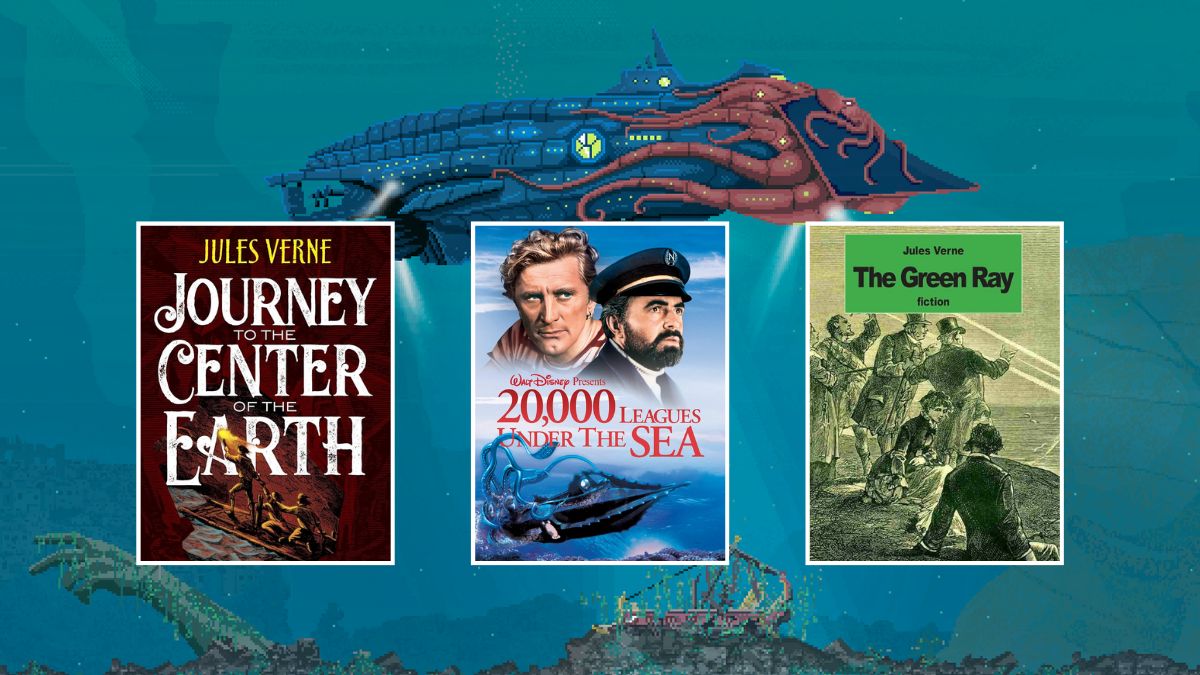
How did you balance elements from Jules Verne's works with the purely creative aspects of the game? Which of his works, in particular, influenced the development of Verne: The Shape of Fantasy?
Daniel GonzalezThe core of Verne: The Shape of Fantasy is Twenty Thousand Leagues Under the Sea. From there, we added layers from his other novels and other personal passions, such as his obsession with Daniel Defoe's Robinson Crusoe. But we needed our own space to tell a story. Verne loved the myth of Atlantis, so from there we started to develop our own idea based on his work.
How did you approach creating an immersive story that stays true to Jules Verne's spirit while offering a modern gaming experience?
Daniel GonzalezJules Verne had a very specific way of storytelling and description. We wanted to keep that essence, so we worked on the feeling of exploration and observation. It's a game to take your time and enjoy everything the scenarios have to say. We are very proud of how we were able to represent these adventure worlds of Verne, even though we are a small studio with very few resources.
"Pixel art conveys both nostalgia and elegance."
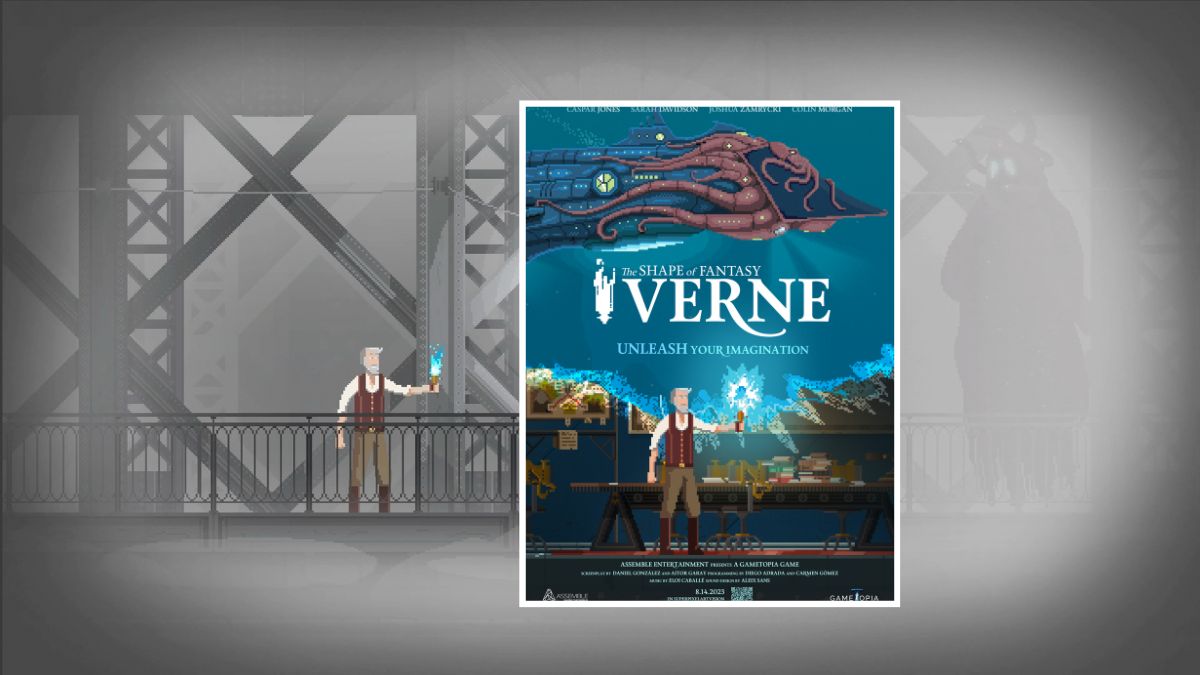
Can you tell us more about the game mechanics that make Verne: The Shape of Fantasy unique? How do these mechanics interact with the narrative?
Daniel GonzalezThe game is based on exploration and conversation to get information. From there, we add mechanics that fit the story we want to tell, like the IMAG, which is the Atlantean device that only Jules Verne can make work, where he can rewrite little things that happened. This device is an analogy of how his imagination works as a writer. With the puzzles, we wanted them to be simple but integrated into the narrative.
Let's talk about the graphics. What do you like about pixel art, and what do you think is its narrative potential? Did you face any particular challenges when adapting certain settings or characters?
Daniel GonzalezI love pixel art because you work with concepts. It's like playing with Lego, your imagination does the rest. Pixel art conveys nostalgia and also elegance, and I think these are two key concepts to represent Verne's worlds and regain our capacity to be amazed. The Nautilus has a lot of details and it took us a long time to draw it, but the one that gave us more work was the sunken temple under the sea, not only because of its size, but also because of the different sections it has, it was a challenge!
"The design and programming of one mechanic should not ruin the experience of another."
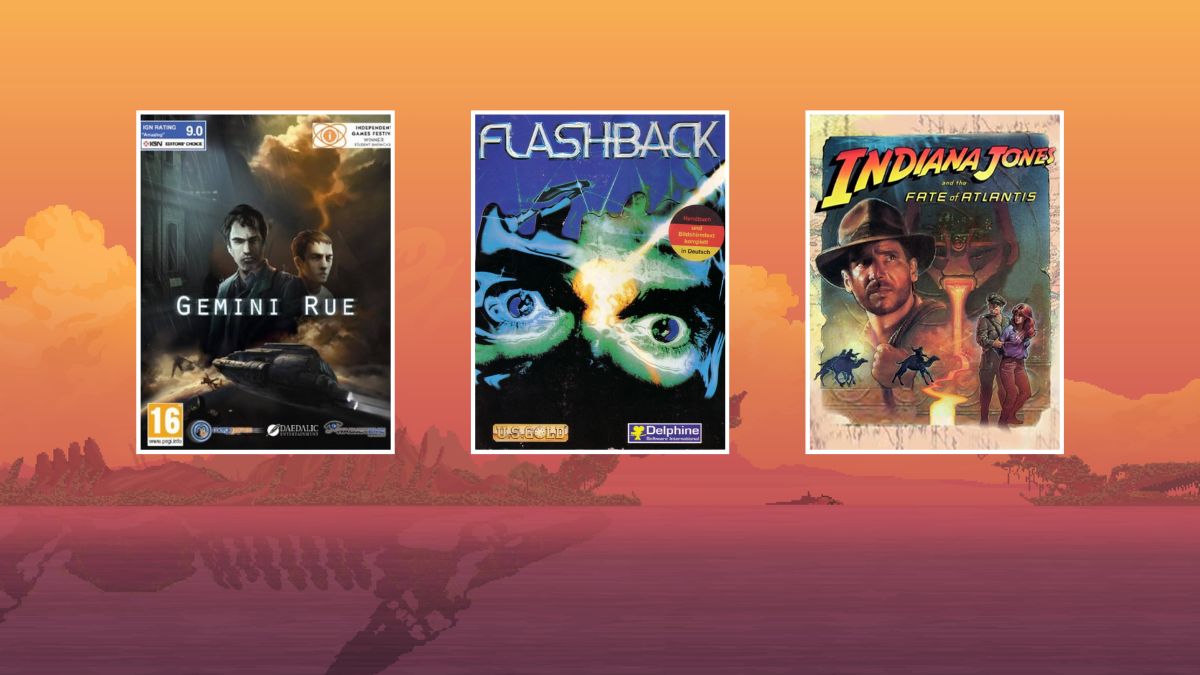
With this vintage graphic style, are you paying homage to any particular iconic games?
Daniel GonzalezThe two games that have influenced me the most when it comes to work are Flashback and Indiana Jones and the Fate of Atlantis. But this game has a lot of The Dig or a more recent game like Gemini Rue.
Which games have influenced your journey as a gamer and inspired you to pursue this career?
Daniel GonzalezTough question! Games like Indiana Jones and the Fate of Atlantis marked me as a gamer. But perhaps the game that inspired me to create video games was Syberia by Benoît Sokal for its wonderful world building and elegance.
Has the core concept of Verne: The Shape of Fantasy evolved significantly since the early stages of development? If so, what were the main changes and why?
Daniel GonzalezProjects as long as the creation of a video game are impossible to remain unchanged, they evolve over time. In our case, the central core has not changed much, but elements of the UI design or mechanics such as platforming have lost weight or stealth has gained more importance depending on the level designs we made.
What were the biggest technical challenges in creating Verne: The Shape of Fantasy? How did you overcome them?
Daniel GonzalezInclude lots of little mechanics. It's a relatively simple game, but it has a lot of elements. To most players it will seem unimportant, but making sure everything works well, that the design and programming of one mechanic does not ruin the experience of another... There are many things to test.
"Verne contains a lot of Easter eggs."

Does the game contain any Easter eggs or subtle references to other works by Jules Verne or significant historical events from his time?
Daniel GonzalezMany, that's the fun of exploring the game. There are references to his work and his life, from finding books by his friend Alexandre Dumas to references to his passion for science.
In the game, the main character, Verne, frequently uses French words in the text to express surprise or frustration: "Merde !" "Mon dieu!" Can you tell us about this funny part of the writing process?
Daniel GonzalezI have several French friends, my daughter studies at the French Lycée... and there is one word that is always in the mouth of the French, and that is "Merde !" I use it a lot myself. So I imagined Verne, even though he uses English as a common language, "Merde !" or "Mon dieu!" comes naturally to him. One thing we've learned and done differently in our current project is to work better on the actors' accents. We are very happy with the actors we were able to work with on Verne, although I know it would have been ideal to work with a French actor because of the accents, but we really tried to do the best we could with our resources.
"The composer created a soundtrack that sounds like iron and immense pressure under the sea."
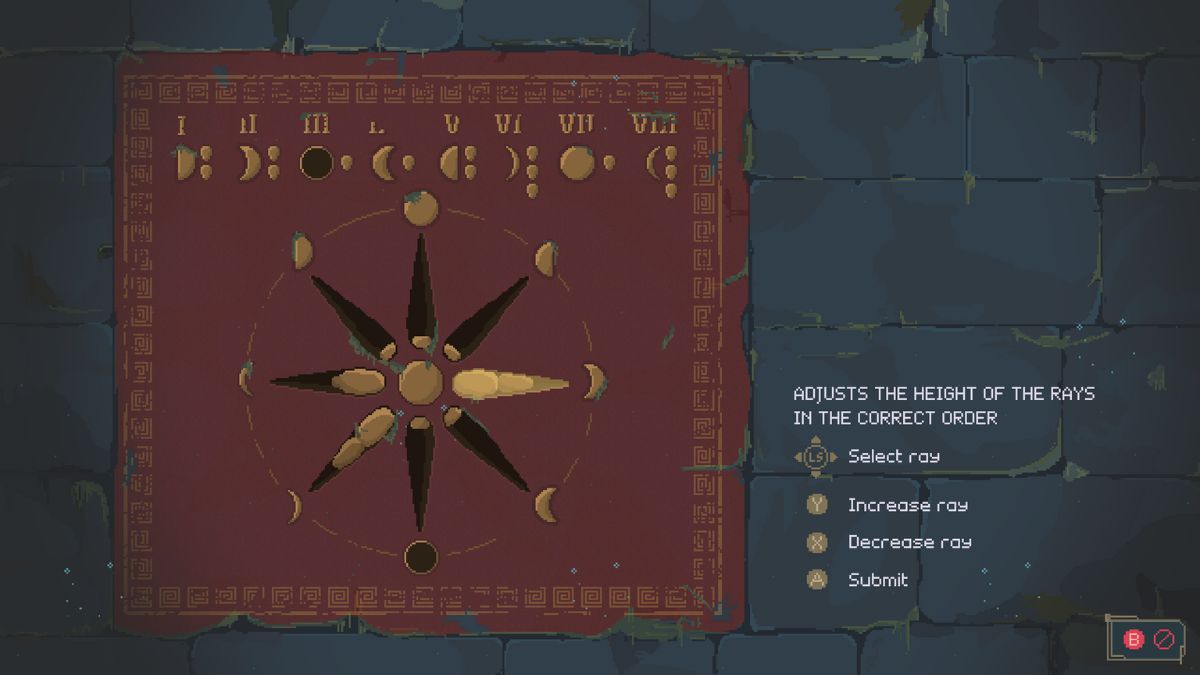
How did you design the player experience to keep it engaging and smooth throughout the game? Are there particular moments where you aimed to surprise or move the players?
Daniel GonzalezThe story begins with a Verne who is not our Jules Verne, he is a scientist not a writer and does not seem to have much imagination. The plot leads us to discover our real Jules Verne, and in this journey there are several surprises and twists. The important thing is that there were always new revelations and that the characters evolved, that it was the story itself that forced you to go on.
How were the music and sound effects designed to enhance the game's atmosphere? Did you collaborate with specific composers or artists for this?
Daniel GonzalezFor me, music and sound are a very important part of the narrative experience. When music sounds, it is because it is telling a story. I was lucky enough to work with Eloi Caballé, a very good Spanish musician who, like me, likes to work with ambient themes rather than melodic ones. He created the oppressive atmospheres of the Nautilus, creating a soundtrack that sounds like iron and enormous pressure under the sea. The classical music pieces that complement the OST serve as narrative, for example, when Jules Verne arrives at Captain Nemo's secret base with the Nautilus, Wagner's Parsifal Prelude plays, because Parsifal was one of King Arthur's knights who went in search of the Holy Grail, while in the game, Captain Nemo goes in search of his own Holy Grail.
"It was a great thing for us, our little project in a museum!"
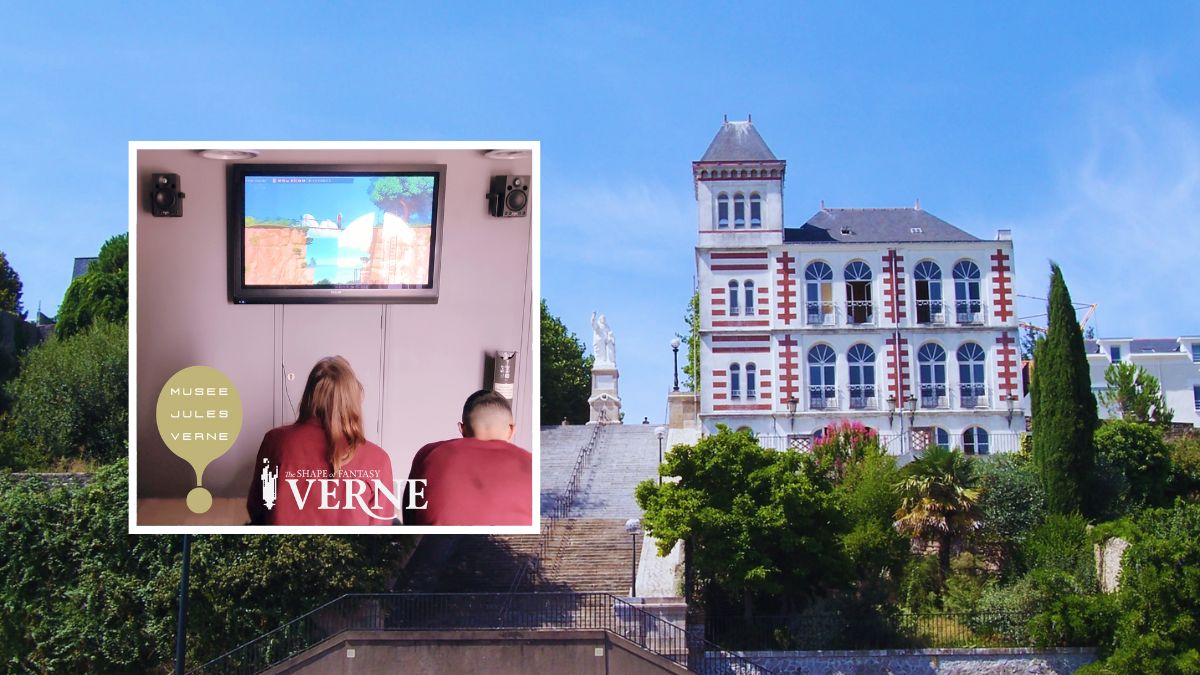
Verne: The Shape of Fantasy can be played at the Jules Verne Museum in Nantes, France. How did this collaboration come about? Did you feel an increased responsibility as a narrative-focused studio to honor Jules Verne's legacy in his birthplace?
Daniel GonzalezIt was a wonderful surprise. A few months after the game was launched, the museum wrote to us. They had downloaded the game and liked it very much for the amount of information we give about Jules Verne and for the work we do to encourage reading of his work, so they proposed us to put the game in the museum. It was a great thing for us, our little project in a museum! It is something that we are very proud of and that we have achieved by putting all our love for Verne into the game.
Gametopia is a Madrid-based studio. Alongside Tequila Works (Rime), Nomada (GRIS), Pendulo Studios (Runaway), The Game Kitchen (Blasphemous), as well as Pyros Studio (Commandos) and Mercurysteam (Castlevania : Lords Of Shadow), Spain is home to many internationally renowned games. In your opinion, what cultural, societal, or geographical strengths of your country contribute to these artistic successes?
Daniel GonzalezI think that despite the crisis that the industry is going through, we are having an impressive year on a creative level all over the world. There are wonderful indie games and really amazing ideas. In Spain I think there are two important factors, there is a lot of creativity and very little economic resources, which forces us to look for new ways to tell stories and present surprising mechanics. But we still have a lot to improve, we are far below the cultural level of countries like France.
"What surprised me the most was the players who bought a Verne book after playing the game."
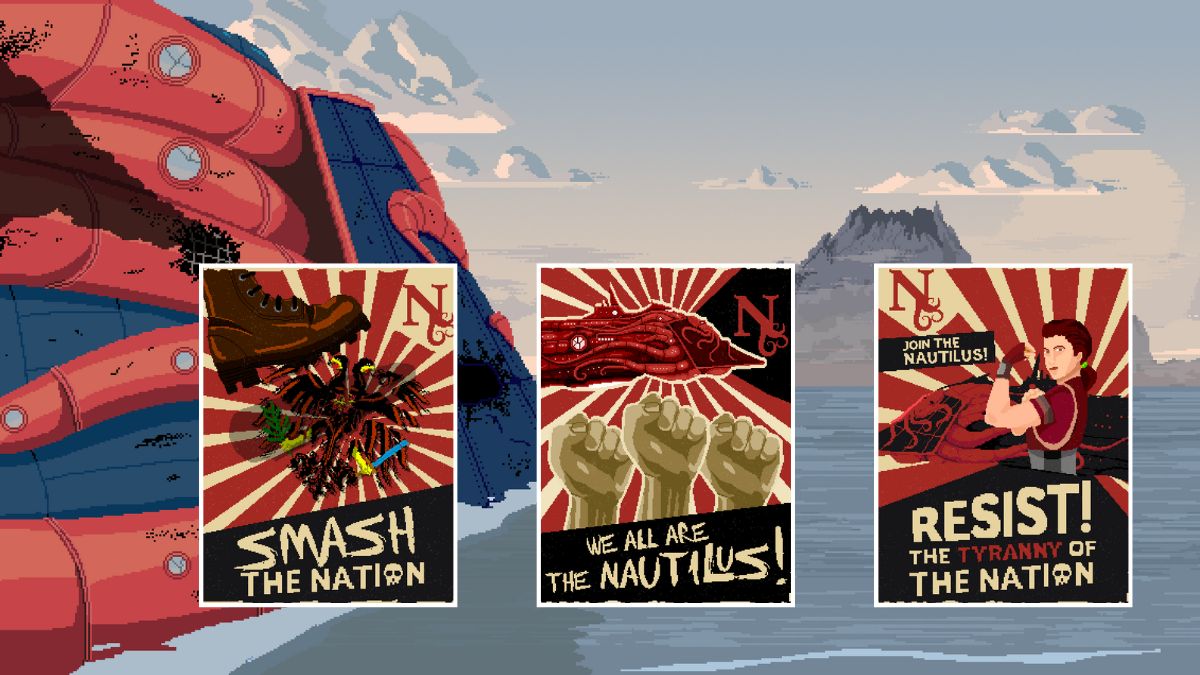
Verne: The Shape of Fantasy has been available on PC since 2023. Have you received any unexpected feedback from players or critics since the game's release? How has this influenced your outlook on future projects?
Daniel GonzalezWe get all kinds of feedback. There are people who like easy puzzles, others who tell us that the puzzles we designed are very difficult, others who say it's a walking simulator but for others the exploration is wonderful, and so on. What we have learned as a studio is to not get lost in the noise and to look at the constructive comments from people who have experience in the industry or who are our target audience. In our current project, we use a lot of feedback from the gaming community, which has generally been wonderful and has given us very good ideas for improvement. But what has surprised and fascinated me the most is the number of messages from players who bought a Verne book after playing it.
To wrap up, what game are you playing right now?
Daniel GonzalezMy time as a gamer is not at its best, with a 5 year old daughter and a lot of work there is hardly any time left to play. I try to keep up with the indie games that are in the style of the games we make. I just finished VirtuaVerse, which has been on my wishlist for a long time, and I loved it.
Thank you for the opportunity to talk about Verne: The Shape of Fantasy, it was very nice.
Thank you for the opportunity to talk about Verne: The Shape of Fantasy, it was very nice.

